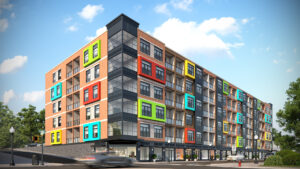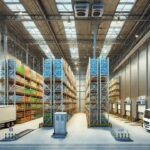In today’s fast-paced, eco-conscious world, sustainability has transitioned from an option to an imperative. As industries shift towards greener solutions, the integration of renewable energy into Mechanical, Electrical, and Plumbing (MEP) systems has become a critical focus for both new constructions and building renovations. This strategic move not only reduces carbon emissions but also drives down energy costs and fosters more sustainable, future-ready buildings.
In this in-depth blog, we will explore the seamless integration of renewable energy into MEP systems, highlighting its numerous benefits and how it enhances a building’s overall energy efficiency. We will discuss how these systems can be customized for both new builds and existing structures, ensuring adherence to evolving environmental regulations. Additionally, we will delve into the role of zero-emission manufacturing and waste management practices, which MEP engineers must consider aligning with the world’s sustainability goals.
Unlocking the Benefits of Renewable Energy in MEP Systems
Slashing Carbon Footprints: Incorporating renewable energy into MEP systems harnesses clean, sustainable resources, dramatically reducing reliance on fossil fuels and minimizing environmental impact.
Cutting Energy Costs: Solar panels, wind turbines, and other renewables can lead to significant savings over time, turning buildings into self-sufficient power hubs for heating, cooling, and electricity.
Building Energy Autonomy: By reducing dependence on traditional grids, renewable-powered buildings offer protection against energy price spikes and grid outages, creating greater operational stability.
Future-Proofing Against Regulations: Stay ahead of tightening ecological standards by integrating renewable energy today, ensuring your building is prepared for tomorrow’s sustainability demands.
Boosting Property Appeal: Energy-efficient, eco-conscious buildings do not just lower operational costs, they enhance property value and attract future-forward buyers or tenants.
Long-Term Reliability: Renewable energy systems are built for the long haul. Solar panels often perform for 20-30 years, and wind turbines deliver consistent output for 25 years or more with proper care.
Exploring Renewable Energy Systems in MEP Design
Solar Energy
Powering the Future with Sunlight: Solar systems leverage the sun’s energy to generate electricity or heat, transforming buildings into sustainable power hubs.
Perks:
- On-site power generation lowers grid dependency.
- Solar water heating slashes HVAC energy consumption.
- Minimal maintenance post-installation.
Considerations:
- High initial costs, balanced by long-term savings.
- Requires optimal sunlight exposure for efficiency.
MEP Applications:
- Electrical: Solar panels seamlessly supply building power needs.
- Mechanical: Solar thermal systems pre-heat air or water for HVAC.
Wind Energy
Harnessing the Power of the Skies: Wind turbines convert kinetic energy from the wind into electricity, ideal for expansive industrial or commercial sites.
Perks:
- Generates substantial electricity, even in cloudy regions.
- Complements other renewable sources like solar.
Considerations:
- Dependent on consistent wind availability.
- High upfront investment in turbines and installation.
MEP Applications:
- Electrical: Ideal for energy-intensive facilities with space for turbines.
Geothermal Energy
Tapping into the Earth’s Core: Geothermal systems use the ground’s stable temperatures for energy-efficient heating and cooling solutions.
Perks:
- Reduces HVAC costs by up to 70%.
- Durable systems with low long-term expenses.
Considerations:
- Higher installation costs.
- Needs sufficient land for underground loops.
MEP Applications:
- Mechanical: Heat pumps regulate indoor temperatures efficiently.
- Plumbing: Enhances water heating capabilities.
Hydropower
Energy from Flowing Waters: Harness the energy of rivers or reservoirs to produce reliable, large-scale electricity.
Perks:
- Consistent energy output with high capacity.
- Perfect for projects near natural water sources.
Considerations:
- Proximity to water bodies required.
- High infrastructure costs.
MEP Applications:
Supplies electricity for industrial campuses or community hubs.
Financial Insights on Renewable Energy Systems: Upfront Costs vs. Long-Term Gains
Implementing renewable energy systems involves an initial investment that varies by technology and project scope. However, these systems often pay for themselves over time, delivering substantial savings and eco-benefits. Here is a snapshot:
Solar Energy
Upfront Costs: Residential installations typically cost $10,000–$25,000, with higher investments for commercial setups.
Return on Investment: Incentives and reduced energy bills can lead to payback within 5–10 years.
Wind Energy
Upfront Costs: Small-scale turbines cost $40,000–$70,000, while commercial-scale systems reach into the millions.
Payback Period: Energy savings recoup costs in 10–15 years.
Geothermal Energy
Upfront Costs: Installation ranges from $10,000–$30,000.
Efficiency Benefits: Cuts heating and cooling costs by up to 70% annually.
Hydropower
Upfront Costs: Among the most expensive, hydropower systems require significant investment in infrastructure.
Value Proposition: Reliable, large-scale energy production ideal for long-term sustainability goals.
Choosing renewable energy is not just about the numbers, it is about future-proofing your project. The initial costs are an investment in resilience, savings, and a cleaner tomorrow.
Zero-Emission Manufacturing and Sustainable Waste Management
As environmental standards evolve, MEP engineers are at the forefront of designing systems that redefine sustainability, extending beyond energy efficiency to tackle carbon-free manufacturing and waste management head-on.
Zero-Emission Manufacturing
Shaping a cleaner future starts with integrating renewables and cutting-edge tech into production processes. MEP engineers contribute by:
Harnessing Clean Energy: Infusing renewable power into manufacturing operations to slash emissions.
Smart Optimization: Deploying AI-driven sensors and automated systems to curb energy waste and streamline processes.
Intelligent Waste Management
Modern waste solutions are no longer optional, they are a cornerstone of sustainable design. Engineers can deliver:
Circular Waste Systems: Designing for maximum recycling, water reuse, and waste reduction.
Eco-Efficient Treatment: Implementing compact, energy-efficient treatment systems for localized waste processing.
Energy from Waste: Converting waste materials into renewable energy sources, turning liabilities into assets.
By embracing zero-emission manufacturing and intelligent waste management, MEP systems become the backbone of eco-conscious buildings, paving the way for resilient, future-ready infrastructure.
Future-Ready Compliance: Building for Sustainability
As environmental standards grow stricter, incorporating renewable energy into MEP design is the cornerstone of future-proofing buildings. Proactive integration ensures adaptability to evolving benchmarks, including:
Net-Zero Energy Goals: Increasing mandates worldwide call for buildings that balance energy consumption with renewable generation from day one.
Eco-Certifications: Standards like LEED and BREEAM prioritize energy-efficient designs, offering higher market appeal and guaranteed compliance.
Charting a Greener Path
Embedding renewable energy systems into MEP infrastructure not only curbs emissions and operational costs but also secures your place in a rapidly changing regulatory landscape. Solutions like solar, wind, geothermal, and hydropower set the foundation for eco-friendly resilience and long-term value.
The AEC Mug specializes in integrating sustainable MEP solutions that meet today’s needs and tomorrow’s demands. Let us guide your project toward a more efficient, sustainable future, contact us to begin the journey!









